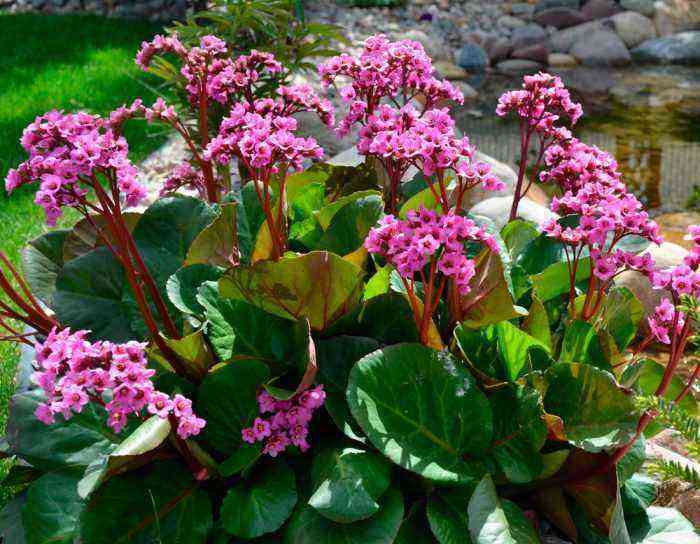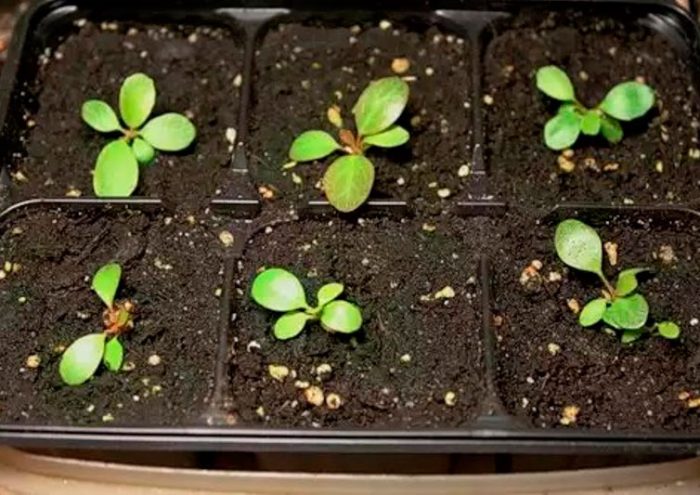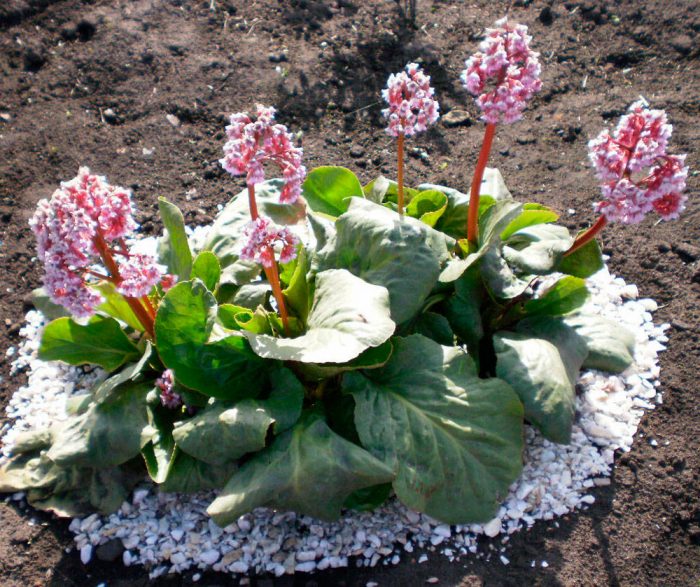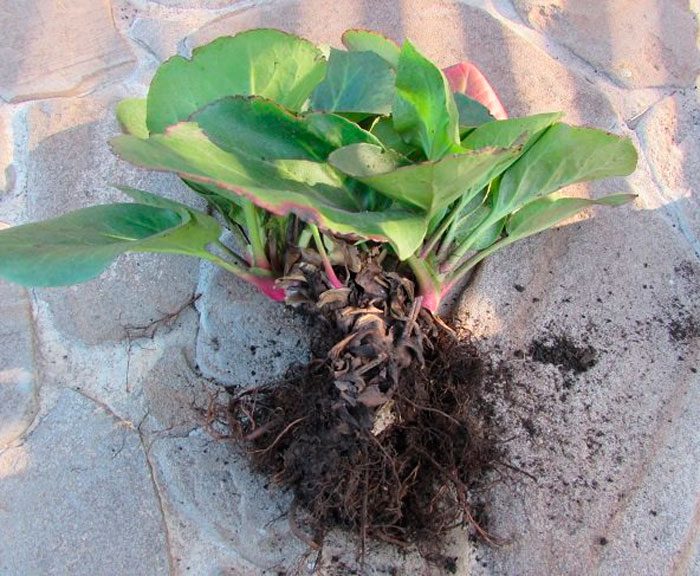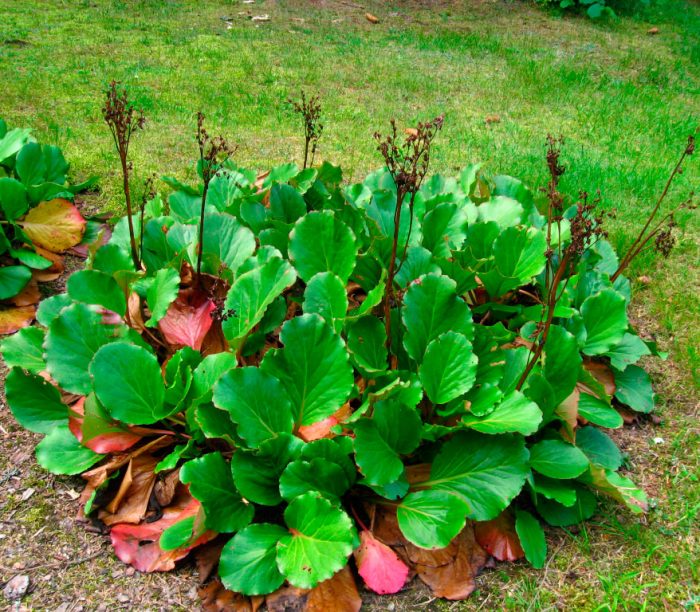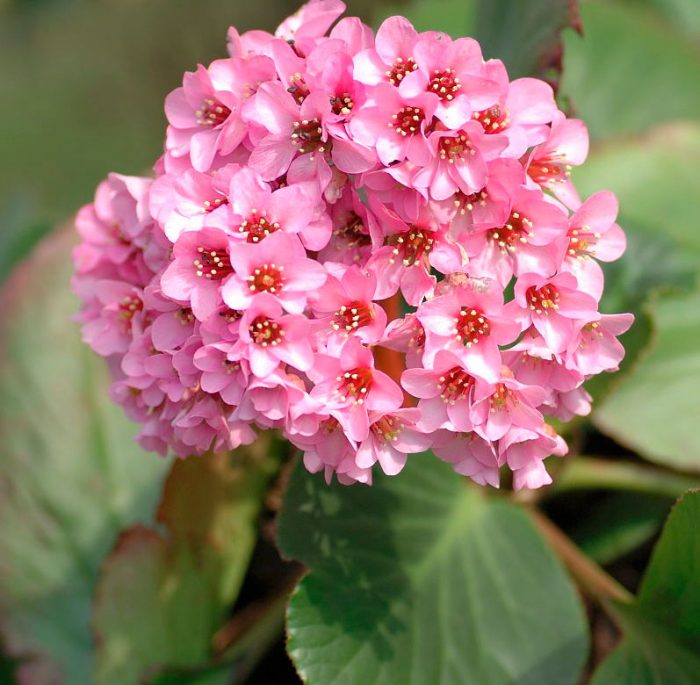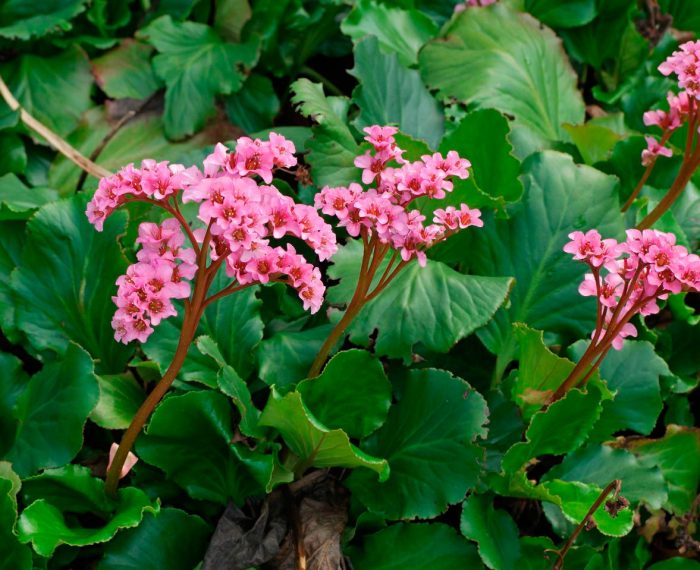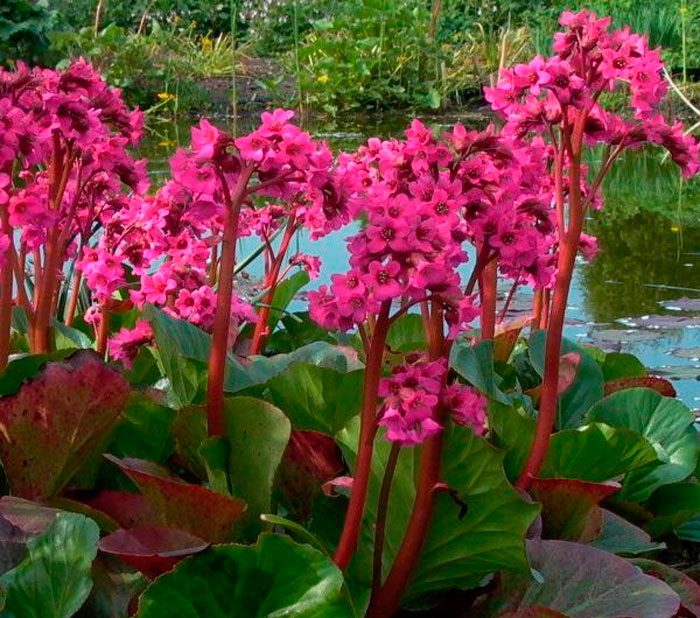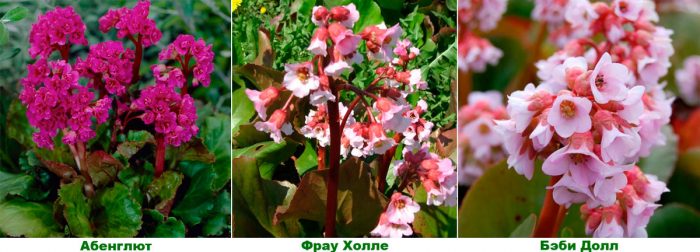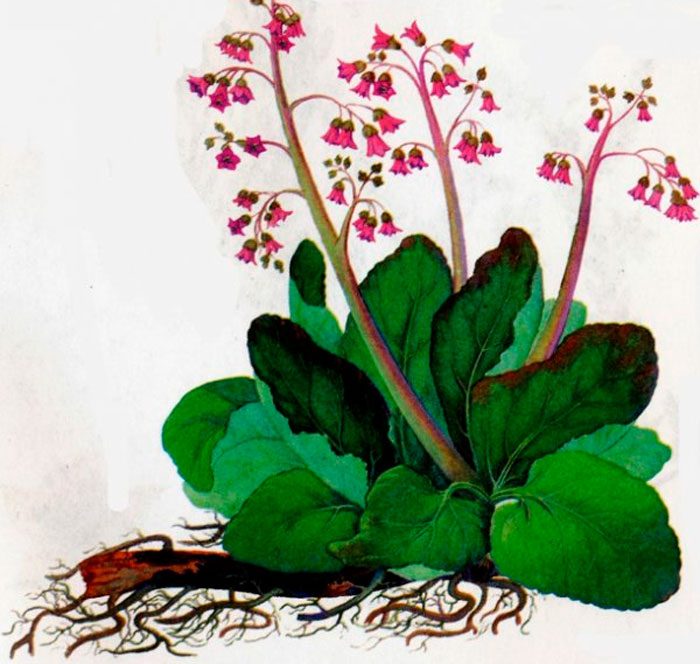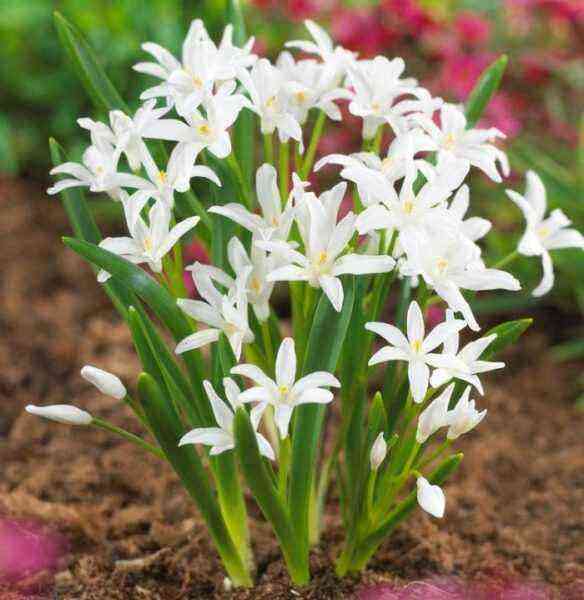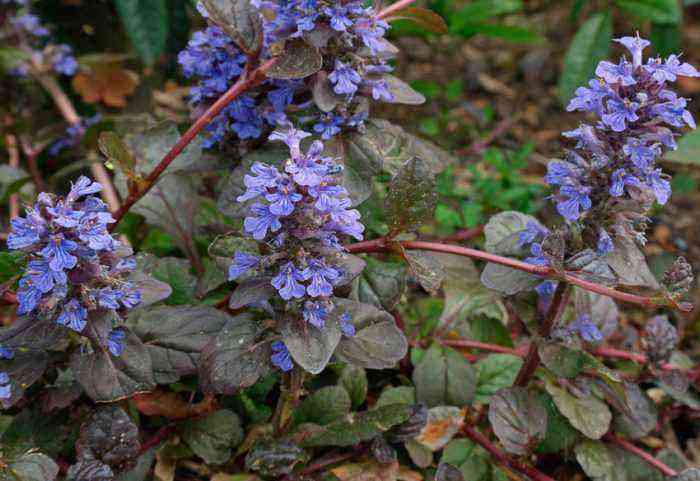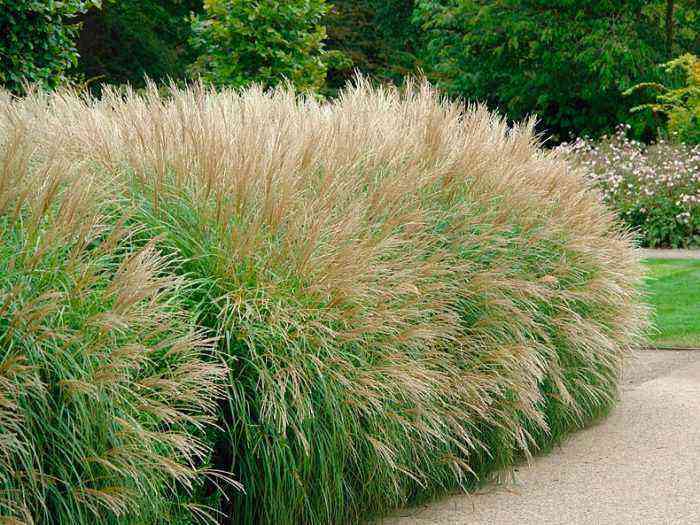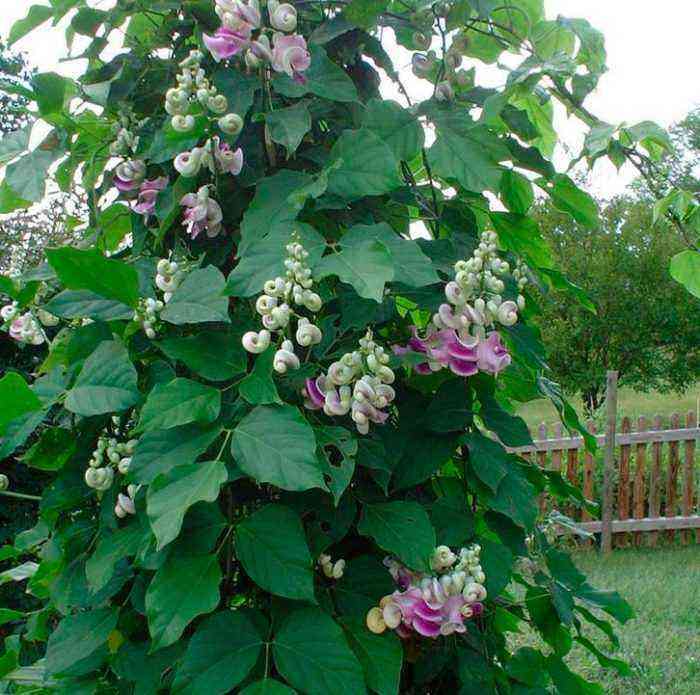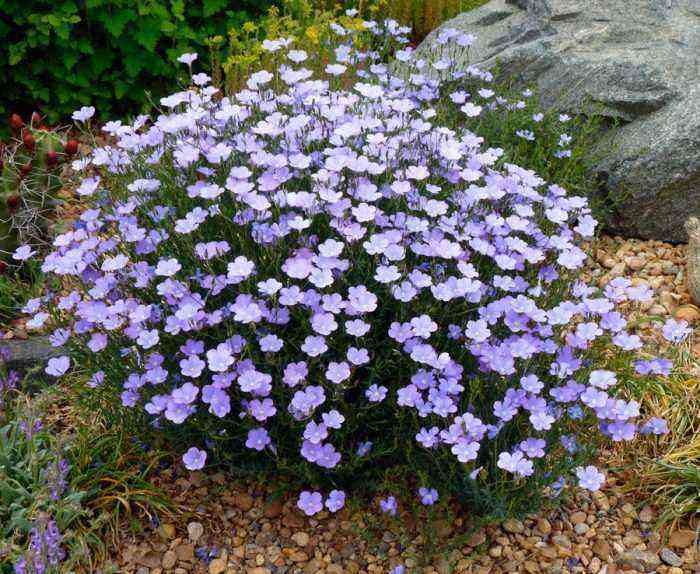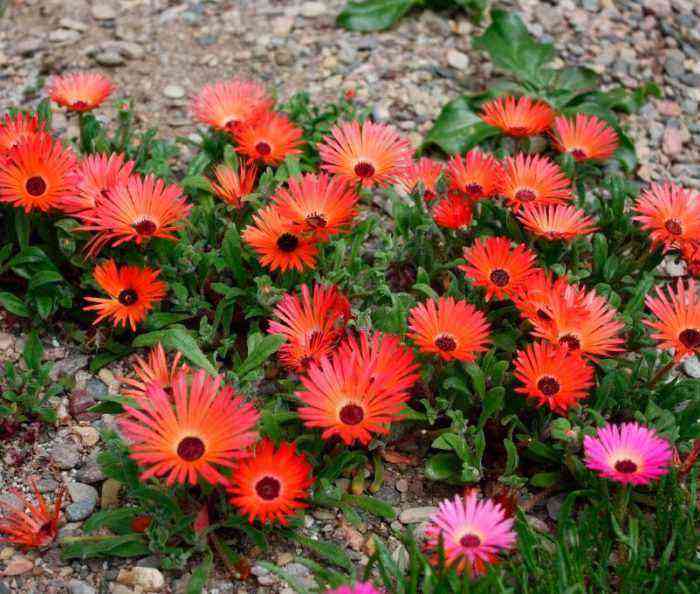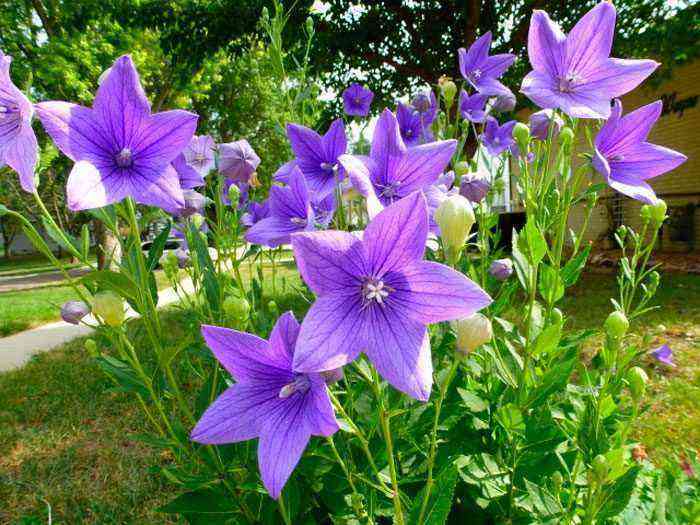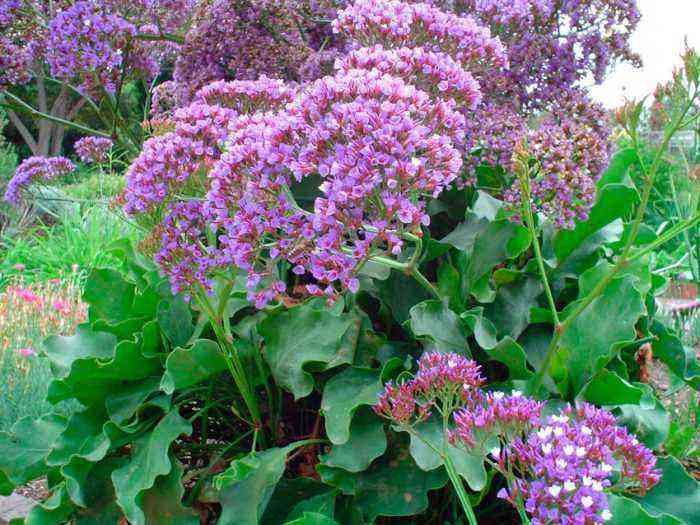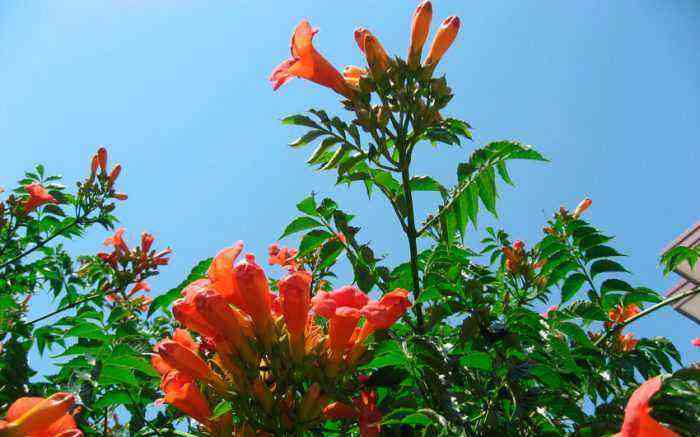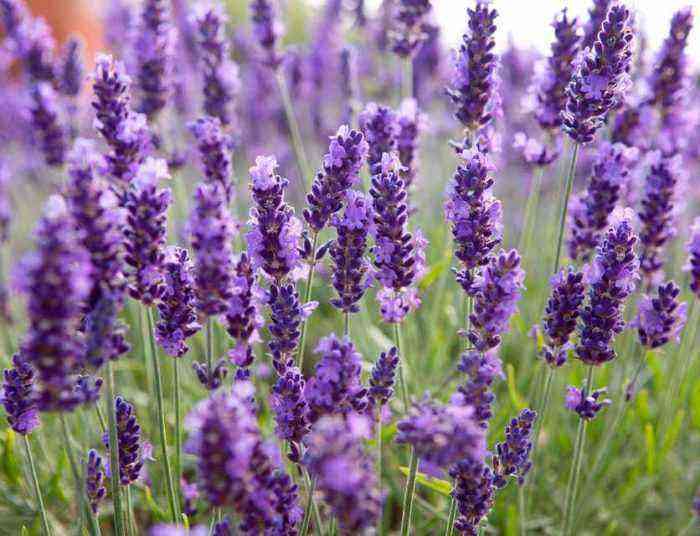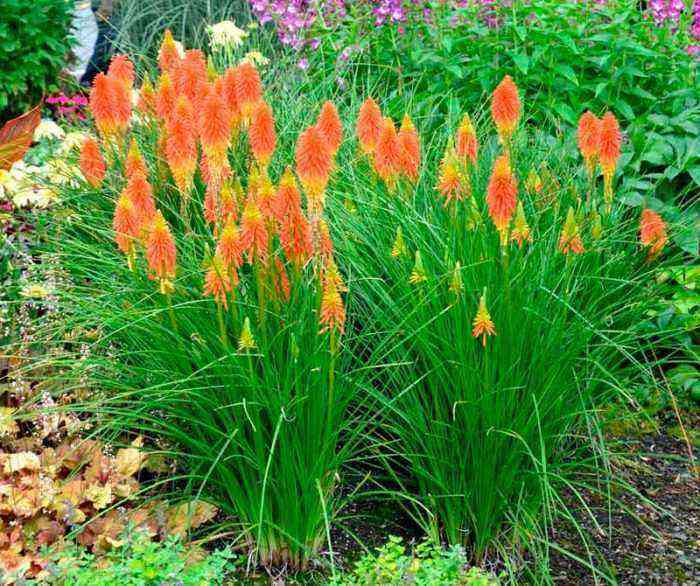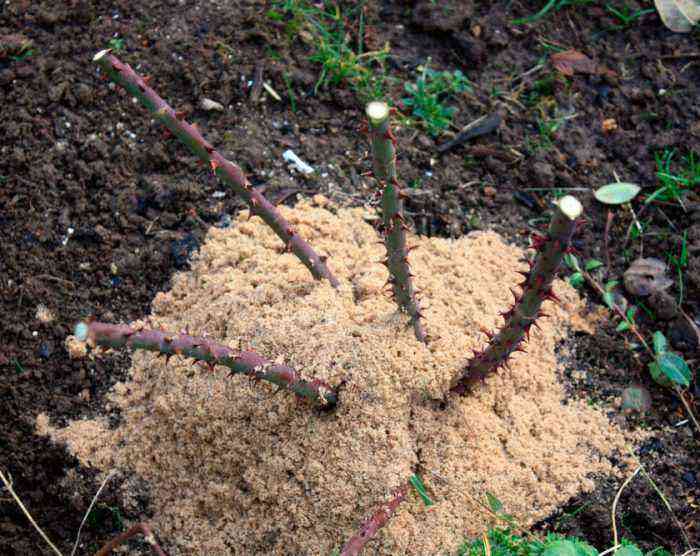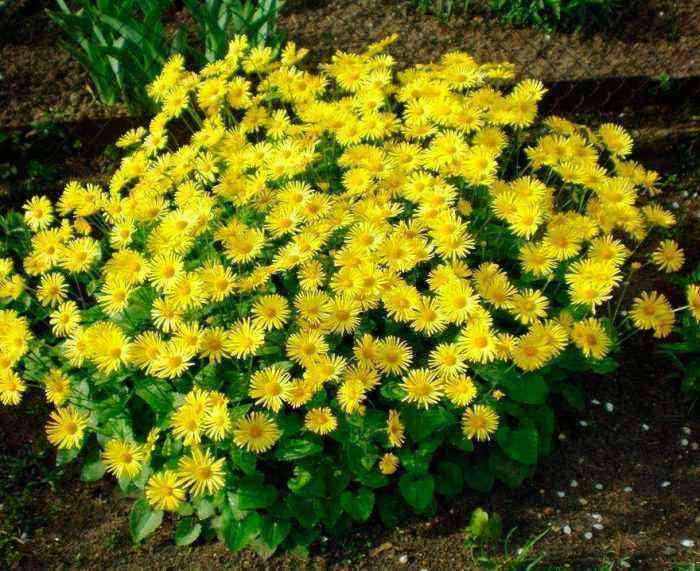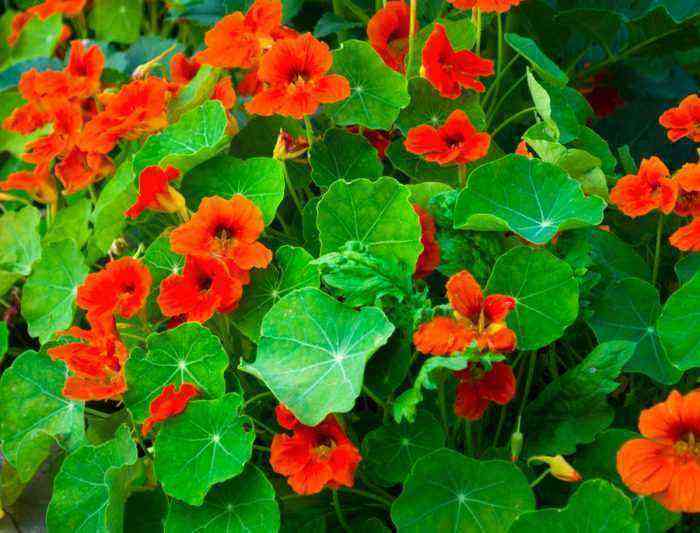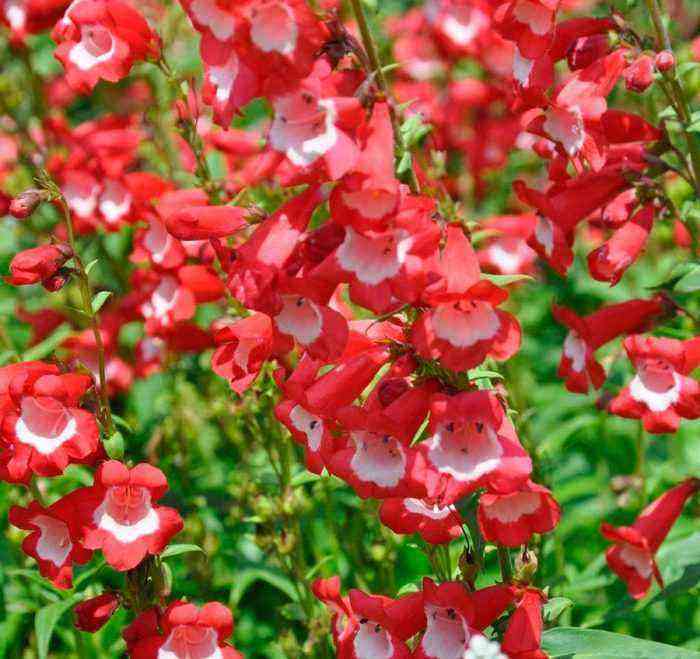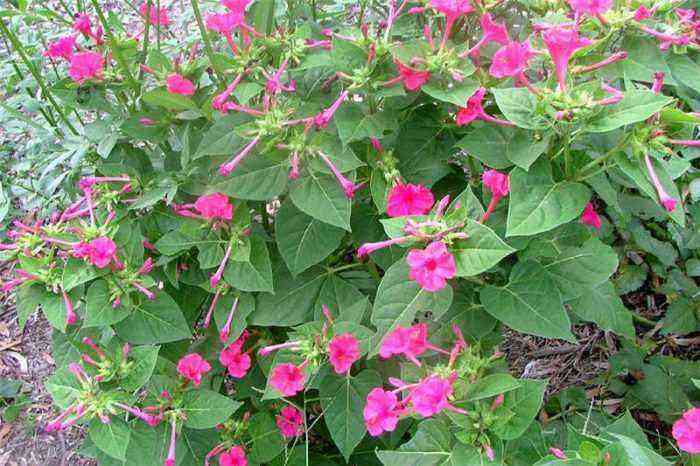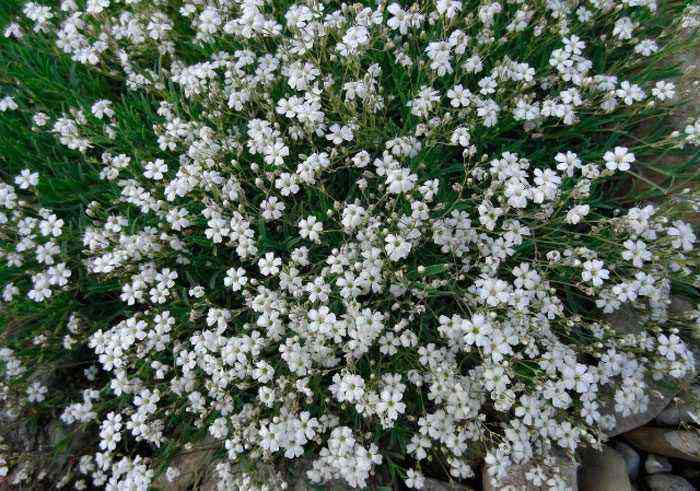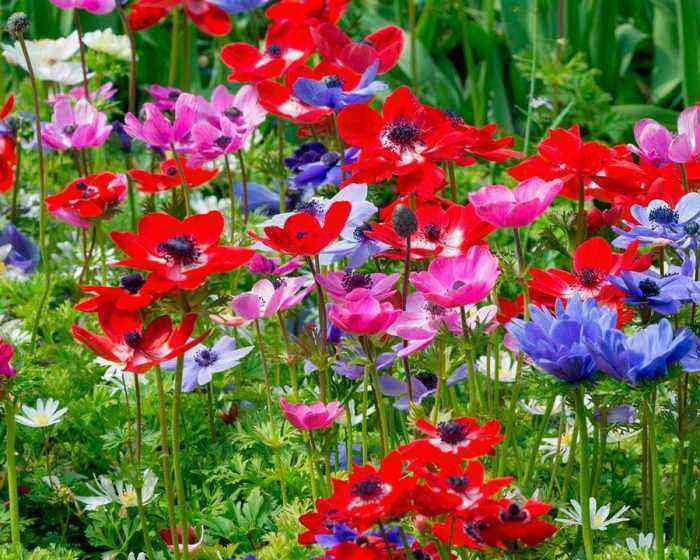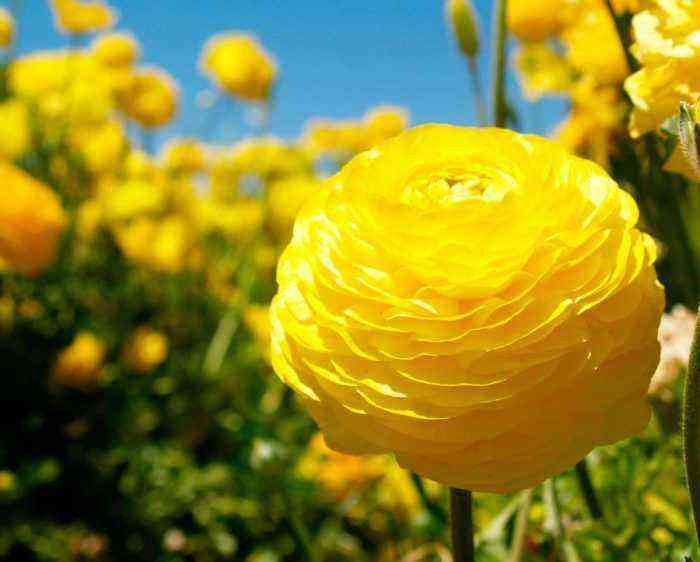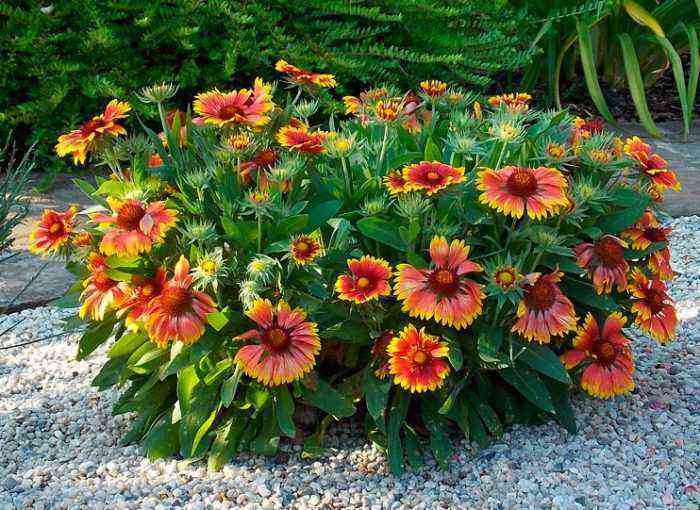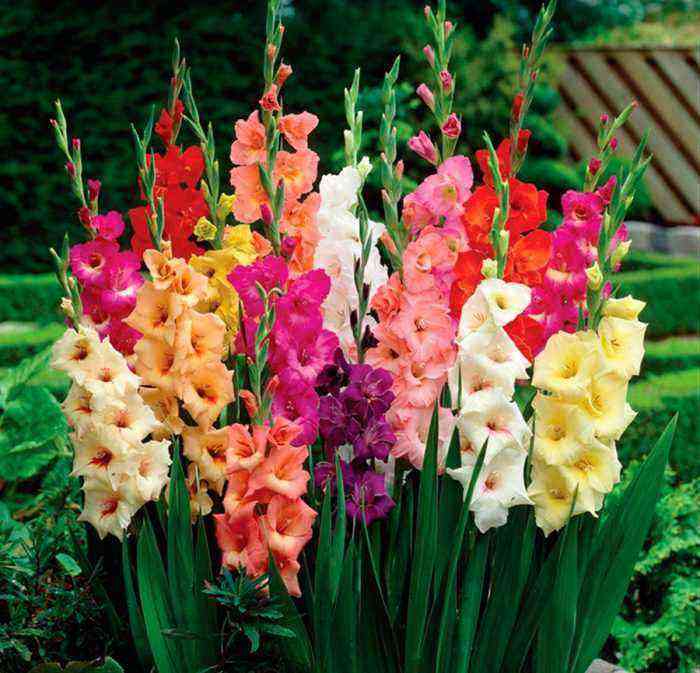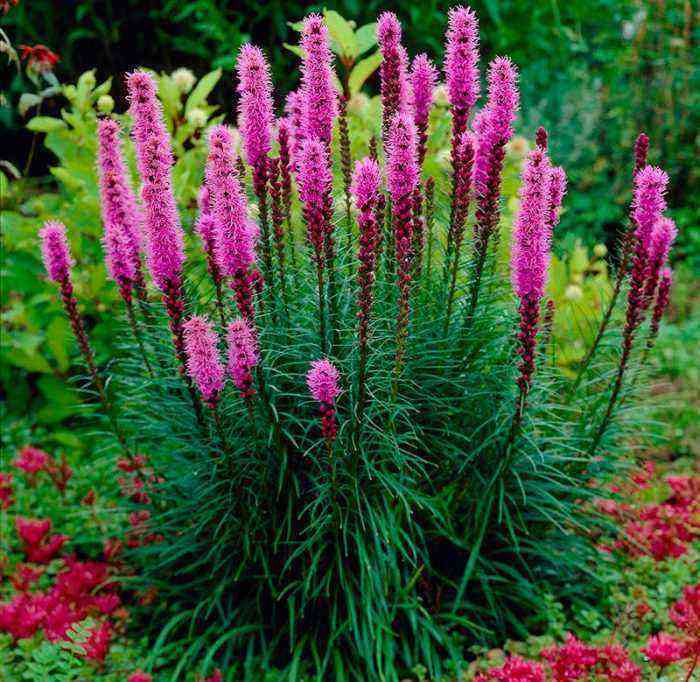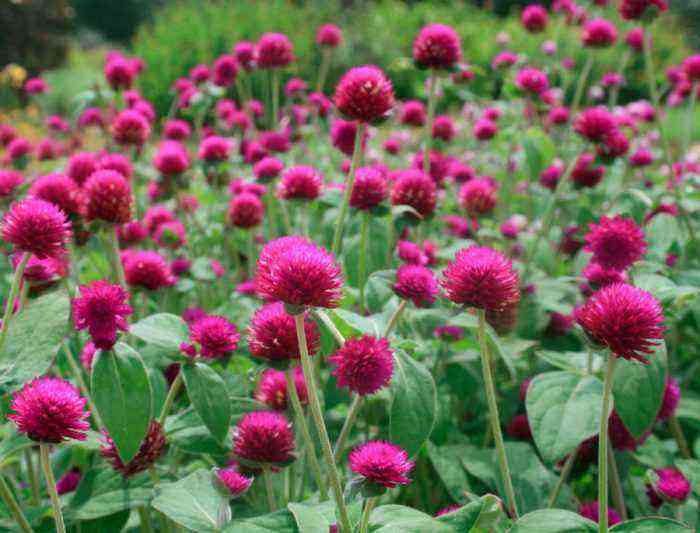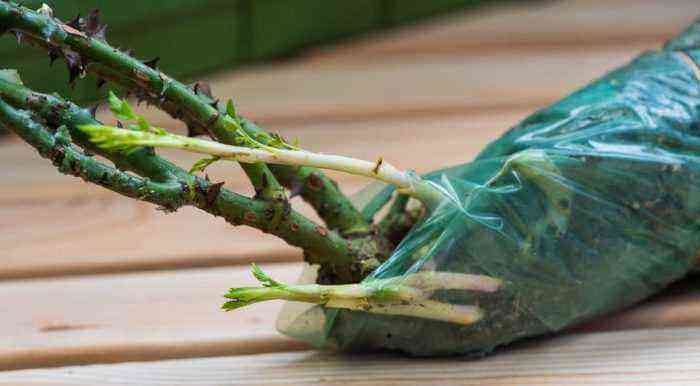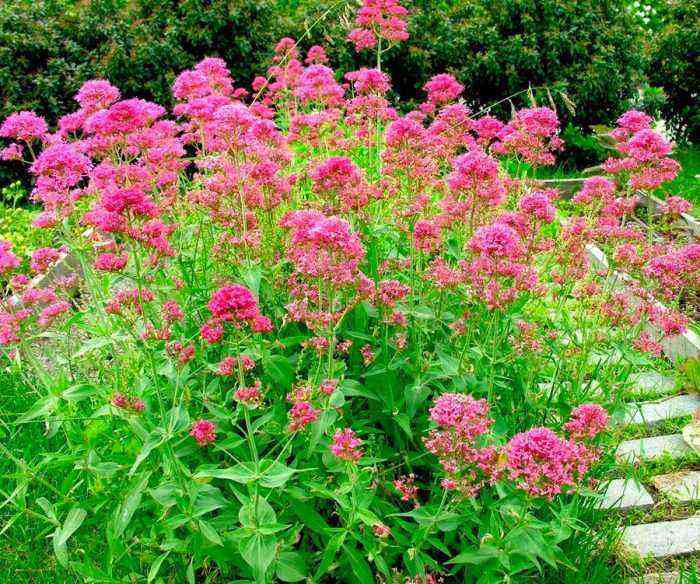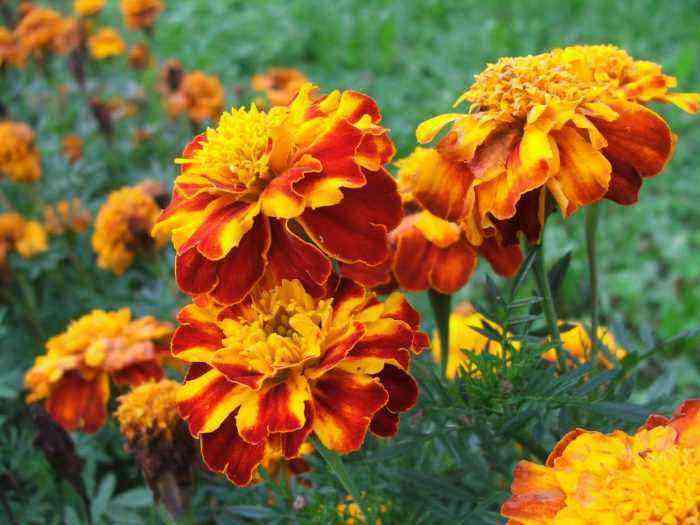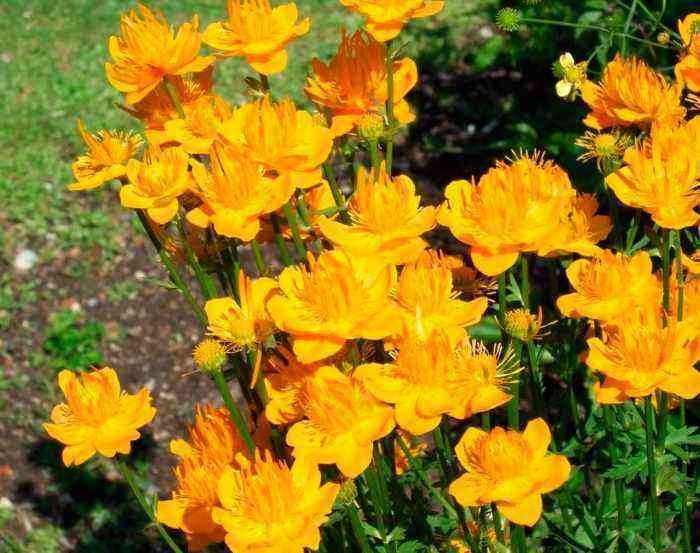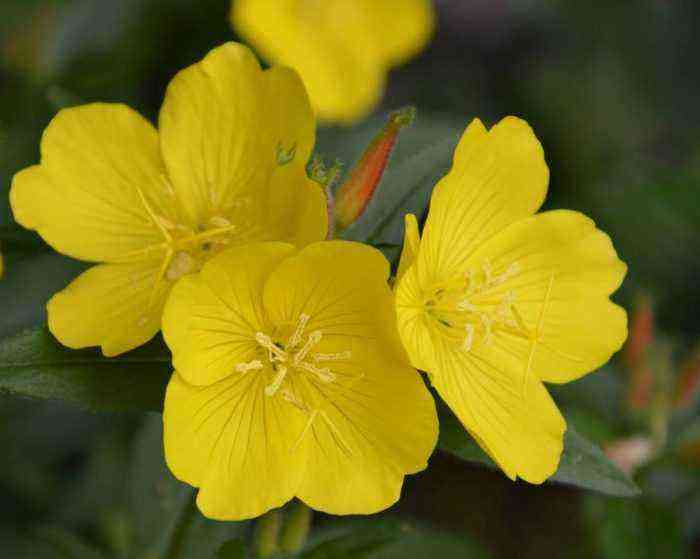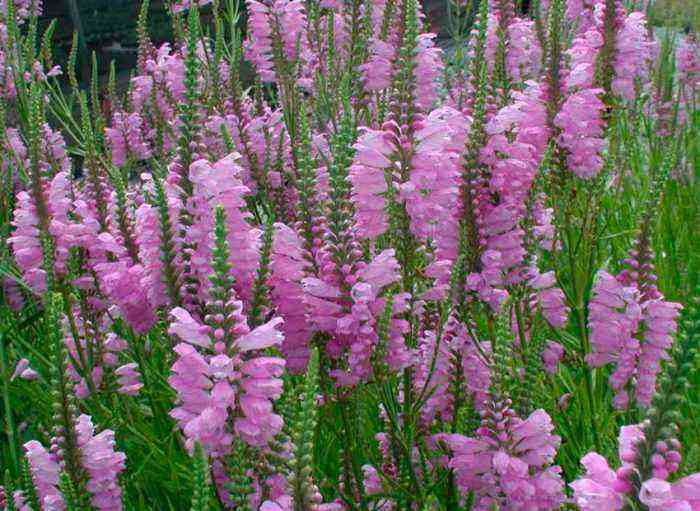Perennial herb badan, or bergenia (Bergenia) is a member of the Saxifrage family. In nature, such a plant can be found in the temperate zone from the countries of Central Asia to China and Korea, it prefers to grow on rocky soil and in cracks in rocks. In culture, this plant appeared in the middle of the 18th century under the name “thick-leaved saxifrage”, later it was separated into a separate genus and it was given a Latin name in honor of Karl August von Bergen, who was a German botanist. The badan genus unites 10 species, some of which are cultivated by gardeners. In addition, thanks to breeders, several dozen different hybrids and varieties of badan were born.
Brief description of cultivation
- Landing… Sowing berry seeds for seedlings is carried out in boxes before winter, seedlings dive in the first days of June, and seedlings are planted in open soil in early August. If desired, the most powerful seedlings can be planted in the garden at the beginning of June without diving.
- Flowering… Depending on the species, the flowering time may vary, some of them begin to bloom already in the last days of April. The flowering period is approximately 6 weeks.
- Illumination… Grown in a slightly shaded place, but an area with bright diffused light is also suitable.
- Ground… Suitable soil should be loose, light, moist and slightly alkaline.
- Watering… In the event that the season is dry with little rain, then the first time the flowers are watered during the formation of buds, then – when they bloom and for the last time – after 15–20 days. In the event that it rains regularly, then there is no need to water badan.
- Fertilizer… The first top dressing is at the beginning of spring after the bush is cut off, the second – 15 days after the berry has faded. For feeding, use a mineral complex fertilizer in liquid form.
- Reproduction… By dividing the bush and by seed method.
- Harmful insects… Nematodes and slobbering pennies.
- disease… Ramulariasis.
- <font><font>Materials</font></font>… In such a herbaceous perennial, the rhizome has healing properties. The funds made from it are distinguished by a hemostatic, antimicrobial, astringent, anti-inflammatory, wound-healing and diuretic effect.
Features of badan
The badan genus is represented by evergreen herbaceous perennials and annuals. The height of the bushes, the rhizome of which is thick and horizontal, can vary from 6 to 35 centimeters. Large glossy, leathery to the touch, leaf plates are collected in a basal rosette, they have long petioles and a dark green color. Dense paniculate inflorescences consist of goblet-shaped flowers of pink, red or white. Flowering begins in the last spring or first summer weeks. One inflorescence can contain about 120 flowers. The fruit is a box with seeds.
In landscape design, this flower looks great against the background of stones next to narrow-leaved or variegated plants (for example, phlox or hosts).
Growing badan from seeds
Sowing
Sowing berry seeds is carried out before winter. To do this, the box is filled with flower soil mixture, in which shallow grooves (about 0,5 cm) are made, the distance between them should be at least three centimeters. The grooves are spilled with water, the temperature of which is slightly higher than room temperature, after which the seeds are evenly distributed in them and sealed. Take crops out into the garden and bury them in the snow. They bring the box into the house in the first days of March and put it in a shaded cool (from 18 to 19 degrees) place.
Growing seedlings
The first seedlings should appear after about 20 days. Seedlings must be watered in a timely manner as the upper layer of the substrate dries up, systematically loosened it up, and also, if necessary, thin out the grown plants and regularly ventilate the room where the seedlings are located. If a green bloom or crust appears on the surface of the substrate, then the substrate should be very carefully loosened, since because of it, oxygen is very poorly supplied to the root system of the plants. And a crust appears as a result of too much watering.
Pixoning seedlings
The picking of berry seedlings is carried out in May. To do this, use a larger box, while a distance of 50 to 70 mm should be maintained between the seedlings, and the distance between the rows should be about 15 centimeters.
When about half a month remains before transplanting the seedlings into the garden, you should start hardening them. For this, the seedlings are taken out every day to fresh air, while the duration of such a procedure is gradually increased. As soon as the seedlings can be outdoors around the clock, they are transplanted into the garden.
Planting badan in open ground
What time to plant
Planting and growing incense in your garden is relatively easy. The fact is that this culture is unpretentious and frost-resistant. Seedlings are planted in open ground in the first days of August. However, some gardeners believe that seedlings should be planted in the garden at the beginning of summer, while they do not need to dive. But most often it happens that most of the plants are too weak to grow in open soil. In this regard, only the strongest and most developed bushes can be planted in open ground at the beginning of summer, and the remaining ones dive and grow at home until August, and only then they are transplanted into the garden.
Features of landing
Badan’s rhizome is very weak and is located horizontally. In this regard, for its cultivation, areas with a loose, light and moist soil of a slightly alkaline reaction are chosen. Often, the plant’s rhizome protrudes from the soil, which can lead to overheating in direct sunlight. Therefore, a suitable site should be located in a little shade on the northwest, north or northeast side of the garden. If you still choose a sunny site for planting badan, then you will need to cover the surface of the soil around the bushes with a layer of mulch, which will help prevent overheating of the rhizome, and also slow down the drying of the soil. Even when choosing a site, it is necessary to take into account the fact that the plant reacts extremely negatively even to a short stagnation of fluid in the root system.
In the selected area, landing pits are made, the depth of which should be from 60 to 80 mm. They are placed in a checkerboard pattern of 40×40 centimeters. A handful of sand is poured into the bottom of each hole. After that, plants are carefully rolled over them, while taking them together with a lump of earth, fill the holes with soil. The planted plants need to be watered.
We must be prepared for the fact that the development of such a plant is extremely slow. The first flowering of bushes grown from seeds will occur only in the third or fourth year.
Berry care in the garden
Most often, subject to the rules of agricultural technology, growing badan in open soil does not cause any particular trouble to the gardener. In spring, after the snow cover has melted, all the foliage that has suffered during the winter should be cut off from the bushes. Also at this time, pruning of overgrown stems and feeding with complex mineral fertilizer are carried out. The plant is re-fed half a month after the end of flowering, at this time the growth of new foliage should begin. For feeding badan, a solution of Kemira-kombi fertilizer is suitable (1 tablespoon for 1 bucket of water). For 1 square meter of a flower bed, 5 liters of such a solution are taken.
Watering
In order for a flower to grow and develop normally, it must be properly watered. The first time the bushes are watered after the buds begin to form, the second – during flowering, and the third – after 15–20 days, as the plants will fade. However, it is necessary to water badan only if the season is dry. If it rains regularly, then the flowers will have enough natural precipitation.
The roots of such a flower from overheating and drying out in nature protect its lower leaf plates, which eventually die off and fly around. But when grown in the garden, in order to preserve the decorative effect of the bushes, the leaf plates that have begun to die off are cut off along with the petioles, and the soil surface is covered with a layer of mulch.
Breed division multiplication
Badan can be propagated not only by seeds, it can also be done by dividing the bush. The overgrown bush forms young rosettes with its own root system, which is very close to the soil surface. That is why it is very easy to dig up and transplant a young rosette without injuring the parent plant. You can only share a healthy, well-developed middle-aged bush with large leaf plates, while the leaf rosette is separated along with the heel. Make sure there are three or more buds on each rhizome section. The division is carried out after the bushes have faded: in May – August. Only 2 or 3 of the youngest leaf plates should be left on the cut off outlet, and all the rest are cut off. They are planted in pre-prepared planting holes, while they need to be buried in the soil by 30-50 mm, and the distance between the divisions should be from 30 to 40 centimeters. The planted cuttings take root quickly. During the first year after transplanting, the rosette grows foliage, and a young bush will bloom only for 2 or 3 years of growth.
Transfer
In the same place, the bush can grow for several decades. Badan does not need frequent transplants. Over time, it can greatly expand in breadth and begin to displace other cultures. That is why it is recommended to transplant the flower to a new place once every 1 or 5 years.
The transplant is carried out together with the division of the bush from early to mid-September. During the planting of parts of the bush, the distance between them should be at least 30 centimeters. After transplanting, during the first 15 days, the badan needs abundant watering.
Diseases and pests
Badan has a very high resistance to both pests and diseases. However, with regular stagnation of water in the root system, the flower can infect a fungal disease, namely ramulariasis. In the affected bushes, brown spots are formed on the front surface with a pale red edging, and a faint whitish bloom appears on the seamy surface of the foliage. Over time, the affected foliage begins to dry out. All diseased foliage is cut off, and the bush is sprayed with a Fundazole solution or a copper-containing agent, for example, copper oxychloride, Bordeaux mixture or copper sulfate.
If the flower is grown in a shaded area, then nematodes or a drooling penny can settle on it. In order to get rid of the penny, the bushes are sprayed twice with a solution of Aktara or Aktellik with a break of 7 days. A dry, fine day is chosen for processing, while the air temperature can vary from 21 to 28 degrees (no higher or lower). Getting rid of a nematode is quite difficult. To begin with, the affected bushes are removed from the ground, and their rhizomes are immersed in a strong solution of potassium manganese for 30 minutes. Then the plant is transplanted to a new place, and the infected soil on the site must be treated several times with insecticidal preparations. It will be possible to plant something in this area after at least 1 year after the end of the treatments.
Badan after flowering
Seed collection
After flowering, a large number of seeds are formed on the berry bush, the size of which is about 0,2 cm.Already during flowering, sweep the most spectacular and largest inflorescence, and after the flowers begin to fade, a bag of gauze should be put on it, which will save the ripened seeds from spilling to the ground. In September, they start collecting seed. To do this, cut off the inflorescence together with the bag, stepping back slightly from it, and transfer it to a dry, well-ventilated room. A few weeks later, when the inflorescence is completely dry, the seeds are shaken out of it. The seed material cleared of debris is removed for storage.
Preparation for wintering
Young bushes, as well as some varieties and types of badan, are not very resistant to frost. Therefore, in the autumn, such bushes need to be covered with spruce branches or covered with flown foliage. And those species and varieties that have high frost resistance do not need to be covered for the winter. Please note that dried foliage is removed from the bushes in the spring, not in the fall.
Types and varieties of badan
Below will be described those types and varieties of badan that are most popular with gardeners.
Badan Strechi (Vergenia stracheyi = Vergenia gorbunowii)
In natural conditions, the species can be found on the humid rocks of Central Asia, the Himalayas, Afghanistan and China, while the bushes can grow up to 3 thousand meters above sea level. Initially, this species was named in honor of the leader of the expedition to the Western Pamir region Gorbunov, but later it was renamed. This plant is a living relic. Coarse teeth are located on the edge of oblong-ovate smooth ciliate leaf plates. In width, foliage reaches from 30 to 50 mm, and in length – from 80 to 100 mm. The leaves are perfectly preserved under a layer of snow. The height of the peduncle is about 0,4 m, at its top a raceme is formed, consisting of flowers of white or pink-lilac color, the length of which is about 1,5 cm. Flowering is observed in July – August. Popular varieties:
- Gazebo… The height of the miniature bush is about 20 centimeters, it is decorated with foliage, the length of which is from 40 to 60 mm. During flowering, white flowers appear, which eventually turn pink.
- Beethoven… The bush reaches a height of up to 0,4 m, it is decorated with pink peduncles and snow-white flowers (brown cups).
- Alba… This natural form has white flowers.
Badan thick-leaved (Vergenia crassifolia)
Or badan medicinal, or Mongolian tea, or Chagyr tea, or early flowers.
In nature, the species can be found in Altai, Kazakhstan, China, Transbaikalia, Sayan Mountains, North Mongolia and Korea. It prefers to grow in cedar forests and on rocky slopes at an altitude of 0,7 to 2,5 thousand meters above sea level. The species is a herbaceous evergreen perennial plant that has a branched and powerful creeping rhizome. Stems are divided into 2 types: leafless flower-bearing stems (their height during the period of fruit formation is about 0,4 m) and rosette vegetative. The vegetative stems are decorated with large, smooth, leathery to the touch leaf plates of a rich green color and obovate. In autumn, they turn fiery red. Lush inflorescences consist of bell-shaped flowers, the length of which is about 1,2 cm, and they are painted in lilac-pink, white or purple-lilac. Flowering begins in June and lasts about 20-30 days. Badan medicinal is used for leather dressing, and a very healthy tea is prepared from last year’s withered leaf plates, which are harvested in spring. The most popular decorative varieties:
- Senor… The plant is about 0,4 m tall, and the flowers are painted in a mauve shade.
- Giderruspe… The variety reaches a height of about 0,6 m. The length of the inflorescence is about 0,2 m, it consists of pinkish flowers. The flowering period of this variety is almost 8 weeks.
- Purpura… The half-meter plant is decorated with reddish-purple flowers up to 10 mm in diameter.
Bergenia cordifolia (Vergenia cordifolia)
This plant is an intraspecific variety of Badan thick-leaved, and it reaches a height of about 0,4 m. Rough to the touch, rounded leaf plates are painted in a dark green hue. In May, inclined racemose inflorescences appear on the bush, which include bell-shaped flowers of a pale lilac or bright pink color. There are varieties whose inflorescences are colored white or light purple. The variety has been cultivated since 1779.
Badan Hissar (Vergenia hissarica)
This relict rare species is endemic to the Gissar ridge. The bush has a very powerful rhizome. Basal rosette blunt leaf plates of oblong-obovate shape, naked, matte, their edge is densely ciliated. The peduncle reaches about 20 centimeters in length, a one-sided racemose inflorescence is formed on it, consisting of 6-8 pale pink or white flowers.
Badan hybrid (Vergenia x hybrida)
This species unites all the available berry hybrids. The most popular ones are:
- Abenglut… The height of the plant is about 0,3 m, its rich green foliage turns brown-bronze in autumn. The flowers are deep purple, they can be simple and double.
- Frau Hall… The inflorescences are snow-white, and the foliage is painted in a marsh color. The leaf petioles acquire a deep purple hue when it gets cold.
- Shnekenigin… Half-meter bushes are decorated with round large leaf plates with a wavy edge. On long purple peduncles, large cupped flowers are formed, at first they are painted white, but over time they acquire a pinkish tint. The variety is grown for cutting.
- Morgen Rote… The plant blooms 2 times during the season. Its branched racemose inflorescences consist of deep pink flowers.
- Baby Doll… Plant height is about 0,3 m. Beautifully shaped pinkish flowers turn dark cream over time.
Also, gardeners cultivate such badan hybrids as: Sieberlicht, Glockenturm, Bellouly, Bassingham White, Sunshade, Magic Giant, Walter Kinley, Sunningdale, Eroika, Pink Dragonfly. And they also cultivate varieties that were named after famous composers: Bach, Bizet, Bartok, Borodin, Brahms. Even in culture, you can find such types of badan as: ciliated, Pacific, Schmidt and Ugam.
Badan properties: harm and benefit
The healing properties of badan
In badan, foliage, rhizome, seeds and flowers have healing properties. The rhizome contains tannins, resins, starch, polyphenols, and the aerial part of the bush contains flavonoids, tannins, arbutin, manganese, copper, iron and vitamins.
Badan rhizome in alternative medicine is used in the treatment of erosion and fibroids of the cervix, enterocolitis and cancer. The plant is used in the treatment of lung diseases, bleeding gums, influenza, acute respiratory diseases, dermatosis, diseases of the gastrointestinal tract, articular rheumatism, hemorrhoids, fever and headaches. Funds made on its basis with badan are distinguished by antimicrobial, hemostatic, astringent, anti-inflammatory, diuretic and wound-healing effect. They also contribute to vasoconstriction, increase heart rate, strengthen capillary walls and lower blood pressure.
Противопоказания
If you take badan remedies for a very long time, then this can cause constipation. Badan tincture should not be taken by people with increased blood clotting. A decoction from the rhizome should not be drunk for hypotonic patients, as it lowers blood pressure.
